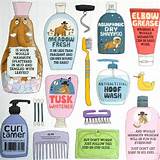Ella Burfoot's story of a little girl called Betty who collects various items of clothing as she ventures across the frozen, snowy landscape, is a charming tale of friendship. Betty is an inquisitive character who befriends a Yeti and helps him to stay warm and make new friends.
The story would make a good stimulus for a science topic 'Keeping Warm'. As Betty ventures through the snow with her sled full of clothes, she meets various animals and inquires if the clothes she has found belong to them. Each of the animals tells Betty that they don't and explains why. Betty then meets the Yeti, who does need clothes to keep him warm.
It is also a story about friendship. The other animals are frightened of the Yeti, despite him being small, because of his appearance. However, this changes when they see Betty walking along holding the Yeti's paw.
The story is told in rhyme and as such provides numerous examples of alternative spellings for long vowel phonemes. Children could collect the examples, sort and classify them in preparation for a spelling investigation.
The language used is also rich with noun phrases. As Betty collects the various items of clothing they aren't simply listed. They are described using noun phrases which enable the reader the visualize each item: 'a little red sled', 'a jingly jangly fluffy hat', 'a woolly scarf', 'one enormous smelly coat'. It would be interesting to read the story to the children without them being able to 'see' the illustrations and get them to draw what they imagine the items (and the Yeti) to look like before introducing them to Ella Burfoot's own illustrations. This could then lead onto children composing their own noun phrases for items they might include in a story of their own.
The text is also a good model for investigating direct speech as in the short text there is a great deal of conversation between the various characters. This could be done through re-presenting the text as a comic strip or a play script.
Overall, a lovely humorous, little story which is a rich resource for the English curriculum and provides a stimulus for topic work in other curriculum subjects.
Published: 2010
Publisher: Macmillan
ISBN: 978-1-4472-8154-2
Published: 2010
Publisher: Macmillan
ISBN: 978-1-4472-8154-2


































